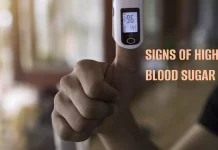Spotting a liar can be a valuable skill in various situations, from personal relationships to professional settings. This article explores different techniques and cues that can help you identify signs of deception and distinguish between truth and lies.
Here are 10 reasons that can help you spot a liar
Inconsistencies in their story
Liars often struggle to keep their stories consistent and may provide conflicting information or details that don’t add up. They may forget what they previously said or change aspects of their narrative when questioned further. Look for contradictions or changes in their version of events, as these can be red flags indicating dishonesty.Avoidance of eye contact
Liars may avoid direct eye contact as they feel uncomfortable or guilty. They may look away, glance to the side. Lack of eye contact can be a subconscious attempt to avoid detection and prevent others from seeing the deception in their eyes.Body language
Pay close attention to a person’s body language when suspecting dishonesty. Liars may display signs of nervousness, such as fidgeting, fiddling with objects, or repeatedly shifting their posture. They may also exhibit unusual body movements, like touching their face, covering their mouth, or crossing their arms defensively. These non-verbal cues can reveal their discomfort and internal conflict.Verbal cues
Liars may exhibit verbal cues that give away their deception. They may stumble over their words, use excessive fillers like “um” and “uh,” or show hesitations and pauses while speaking. They may also try to buy time by repeating the question or asking for clarification. These verbal indicators suggest a person has struggled to fabricate or maintain their false story.Overcompensation
Some liars may try to overcompensate for their deceit by providing unnecessary details or becoming overly defensive. They may offer excessive explanations, too much information, or become emphatic in their denials. This overcompensation can be an attempt to convince others of their honesty but can raise suspicion.Lack of emotion
Liars may exhibit a limited range of emotions or display inappropriate emotional responses. They may show little or no emotional display when discussing significant events or issues that would typically elicit a strong reaction. Their emotional detachment is a sign they are trying to hide their true feelings or maintain a false persona.Incongruence between body language and speech
Watch for discrepancies between a person’s body language and their spoken words. For example, they may shake their head while saying “yes” or nod while saying “no.” These incongruencies can indicate that their true thoughts and feelings are not aligning with their verbal communication, suggesting possible deception.Microexpressions and facial gestures
Microexpressions are quick, involuntary facial expressions that reveal authentic emotions. These fleeting expressions occur for a fraction of a second and can betray a liar’s true feelings, even if they are trying to maintain a composed façade. Pay attention to microexpressions like fleeting smiles, eyebrow raises, or eye flashes that don’t align with the person’s verbal communication.Inability to answer direct questions
Liars often find it challenging to provide straightforward answers to direct questions. They may try to deflect or evade by changing the subject, providing vague responses, or answering with unrelated information. Their evasive behavior can indicate that they are trying to avoid revealing the truth.Gut feeling
Trust your intuition. Sometimes, you have a gut feeling that something is off or that the person is being dishonest. Your instincts can pick up on subtle cues and inconsistencies that may not be immediately apparent. If you have a strong sense of unease or suspicion, it’s worth considering and further investigating the situation.
Recognizing inconsistencies in a person’s story, observing their body language and verbal cues, and trusting your intuition can help you spot a liar. However, it’s important to note that these signs should consider indicators rather than definitive proof of deception. Experts always recommend gathering additional evidence or seeking professional advice when dealing with dishonesty.
Conclusion
Becoming adept at spotting lies requires a combination of careful observation, understanding psychological and physiological cues, and awareness of different lie detection techniques. However, it’s crucial to approach the topic with caution, considering the limitations and potential legal implications. With practice and knowledge, you can enhance your ability to spot deception and make more informed judgments in various aspects of life.











